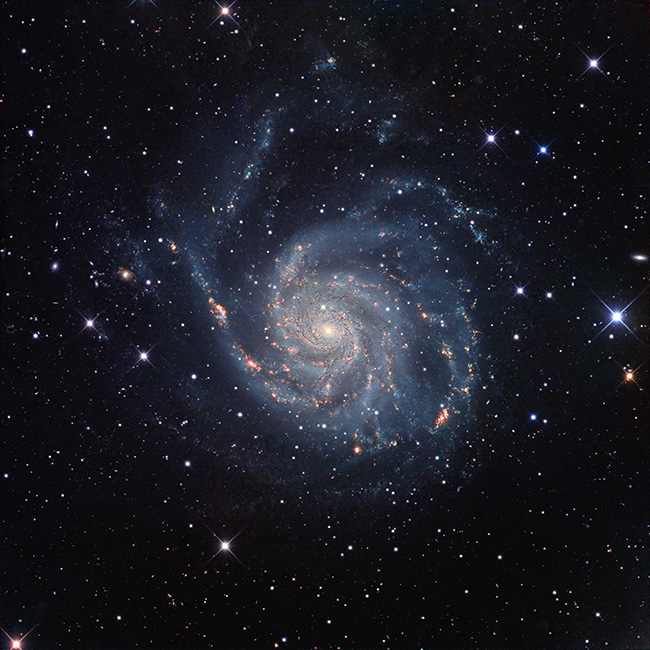
|
Date: April 2024 - Location: Dark Sky Observatory, Davis Mountains, TX
Scroll down to view description.
|

|
Discovered by Pierre Mechain in 1781[3].
M101 (NGC 5457) is also known as the Pinwheel Galaxy. It is one of the brightest of the "Grand Design Spiral Galaxies" and can be viewed with modest amateur telescopes under relatively dark skies. It lies in the constellation Ursa Major and its distance has been determined by measurements of Cepheid variable stars using the Hubble Space Telescope to be 24 (+/- 2) million light years from the earth[3].
The galaxy is extremely large and spans a distance of 170,000 light years in diameter[1,2]. It has a population of an estimated one trillion stars[2]. By comparison, the Milky Way, our home galaxy, has a diameter of about 100,000 light years with an estimated stellar population of between 100 and 400 billion stars[4].
M101 has numerous areas of active star formation. These areas, known as HII Regions, shine in the red emission light of excited hydrogen gas. Several are so large and bright they are classed as Giant HII Regions[1] and have their own NGC designations[1].
The spiral structure of M101 has been distorted and its center is decidedly displaced to one side[3]. This is probably due to interactions with other nearby galaxies. M101 is the brightest of a group of galaxies known as the M101 group[3].
This "face on" galaxy is truly an impressive celestial object.
References
|